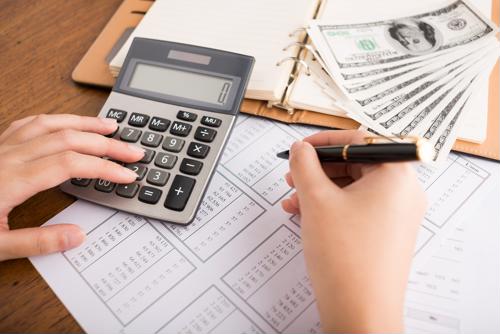
An emergency fund is a bank account with savings that you'll only use when unexpected expenses come up. Some situations that may warrant spending your emergency fund include:
- Major home or vehicle repairs.
- Unexpected medical expenses.
- Unemployment.
Everyone should have an emergency fund. Life happens, and life can be expensive. Having a stash of cash to help cover surprise bills can help you maintain financial stability during challenging times.
So, how do you go about creating an emergency fund? Here's a three-step guide:
Step 1: Open a savings account
First, you'll need a place to keep your emergency fund. The best way to keep your emergency fund secure is to open a savings account that has a high interest rate and is easy to access, NerdWallet recommended.
You'll want a high interest rate because that way, your money will grow over time. And having easy access to the funds will allow you access your money if you need it quickly.
Step 2: Funnel money into it
Of course, you'll need to put money into the account. Starting small is perfectly fine; over time, continued contributions as well as interest accrual will increase your balance.
There are many ways to approach this step. Here are a few ideas:
Arrange regular money transfers: Set up automatic money transfers from your checking account into your savings account. This will help you save without having to remember to regularly put cash into your fund.
Dedicate irregular income to savings: Any time you have atypical income, like bonuses at work, tax refunds or gifted money, put it directly into your emergency fund.
Clean up your budget: Analyze how you're currently spending your money, and find ways you can cut back. Push the money you save into your emergency fund.
As you determine the best saving process for you, ensure you strike a balance between your savings goal and your other financial responsibilities.
Speaking of savings goals, how much should you have in your emergency fund?
There isn't a specific dollar amount everyone should aim for. Instead, the answer to this depends on your lifestyle. Have enough money in your emergency fund to cover at least three months' worth of living expenses, BankRate advised. This way, you can lean on this savings account if you lose a job.
Step 3: Re-evaluate your needs and savings strategy
Over time, your account balance will grow and your life will change. Perhaps you move to a new apartment or city, you take a new job or you welcome a new family member into your home.
Make a point to evaluate your financial situation a minimum of once per year. In this evaluation, look carefully at your debts and income, your emergency fund balance and the balances of other bank accounts. Analyze your monthly and annual living expenses.
In short, ensure that your savings strategy still fits into your lifestyle. If not, make adjustments so that, if you should ever need to rely on your emergency fund, it's prepared to handle the unexpected costs life throws at you.
If you have questions about savings accounts and strategies, reach out to The Federal Savings Bank. We'll help you get started building your emergency fund.
This information is intended for educational purposes only. Products and interest rates subject to change without notice. Loan products are subject to credit approval and include terms and conditions, fees and other costs. Terms and conditions may apply. Property insurance is required on all loans secured by property. VA loan products are subject to VA eligibility requirements. Adjustable Rate Mortgage (ARM) interest rates and monthly payment are subject to adjustment. Upon submission of a full application, a mortgage banker will review and provide you with the terms, conditions, disclosures, and additional details on the interest rates that apply to you individual situation.

